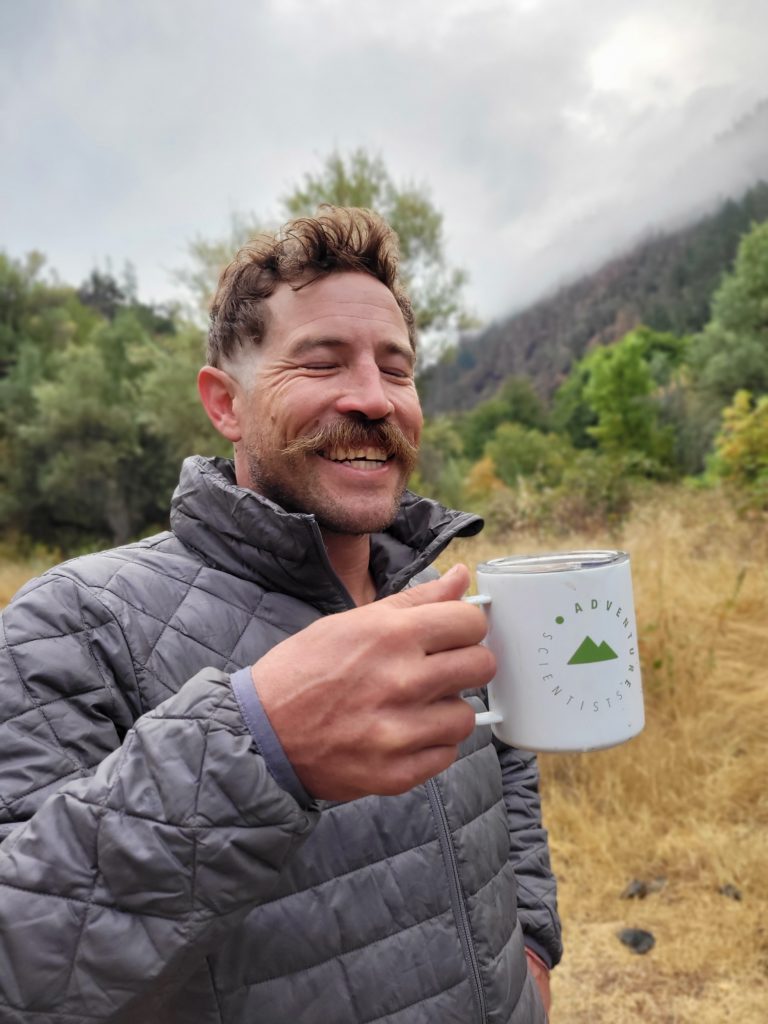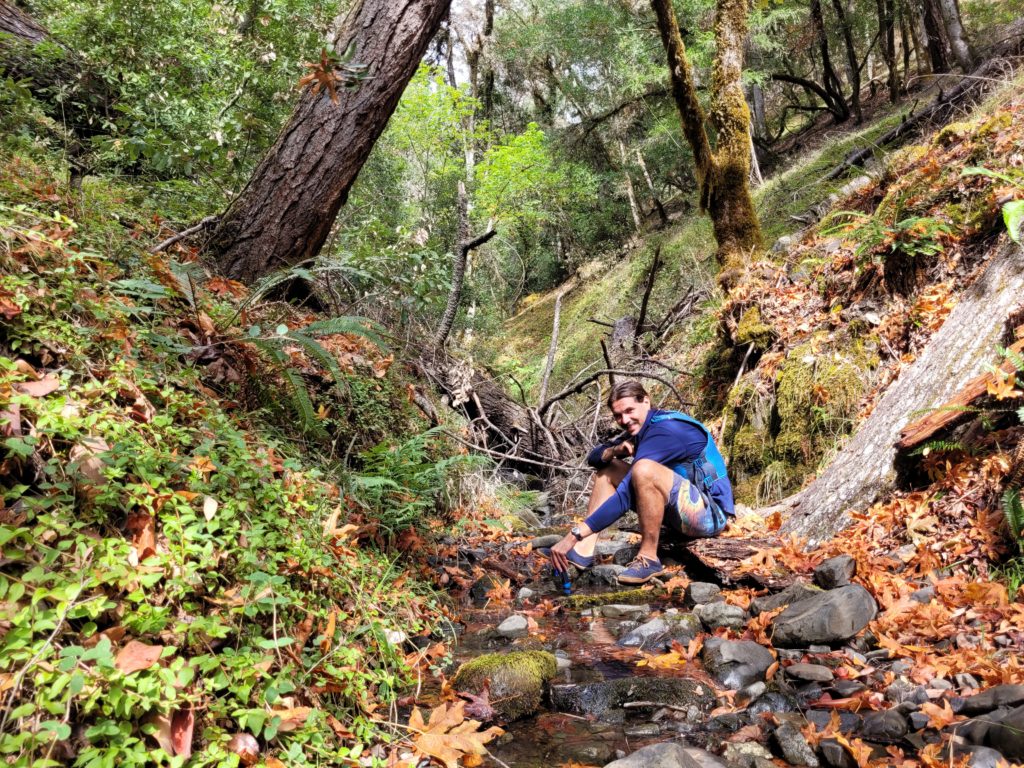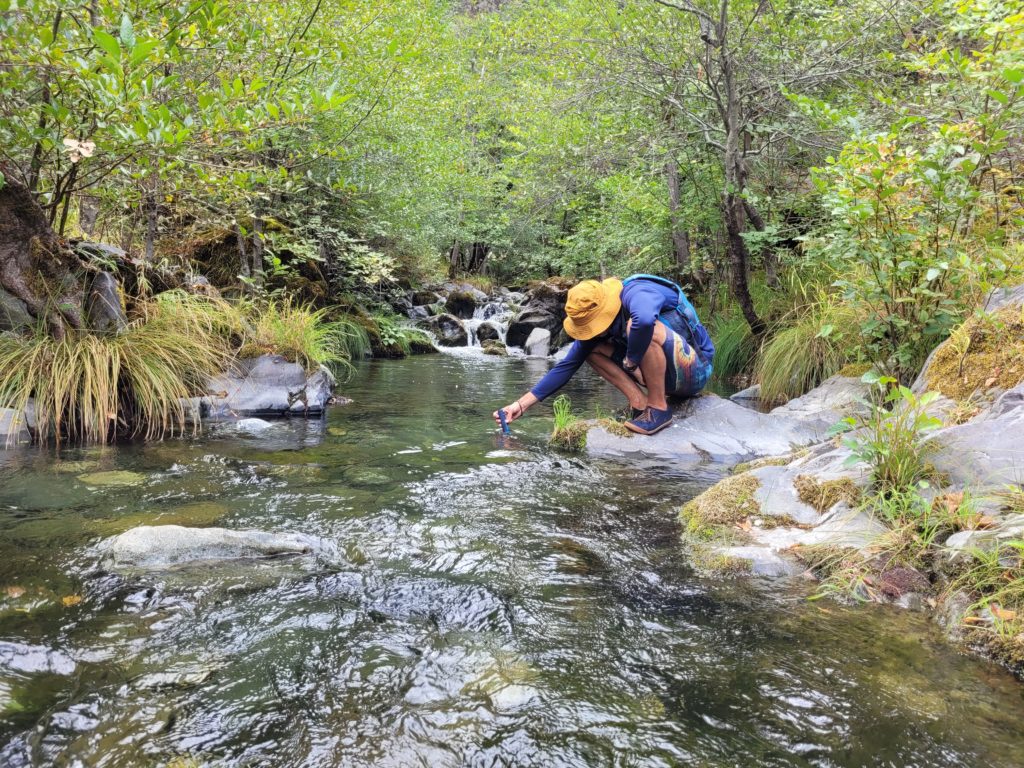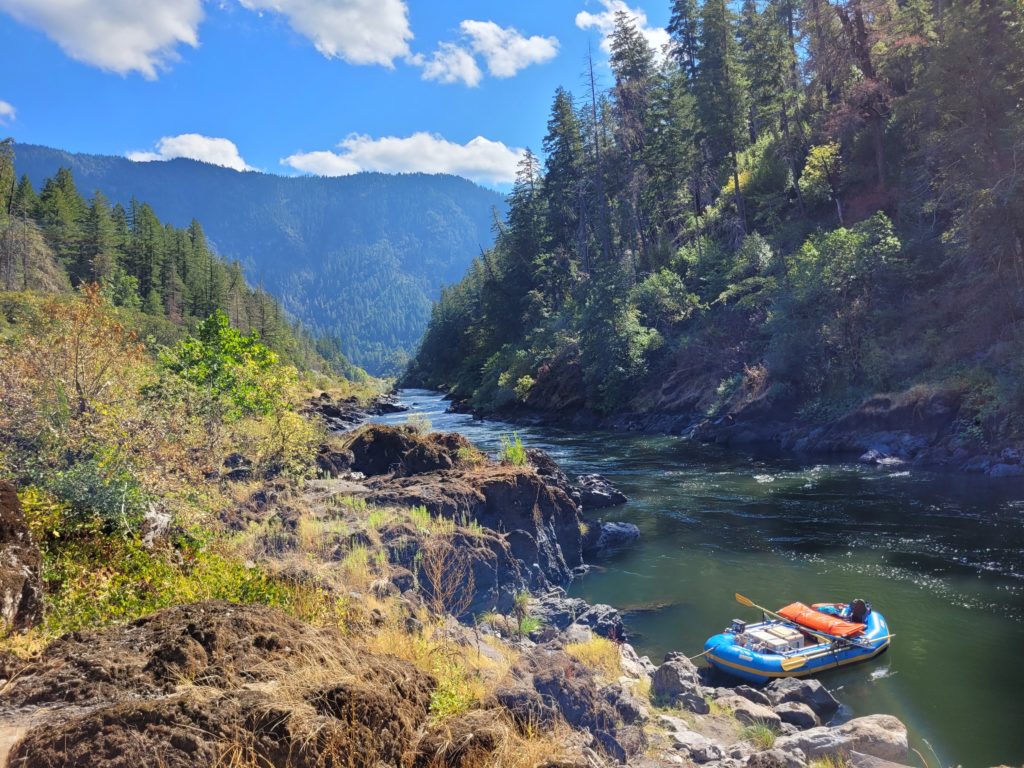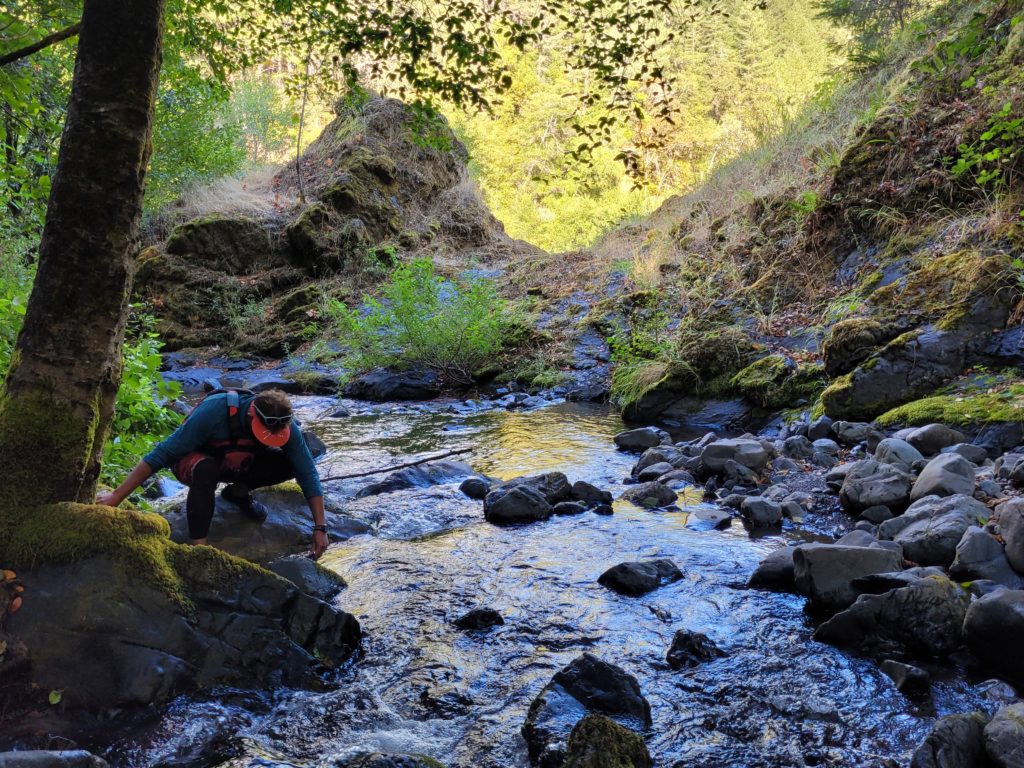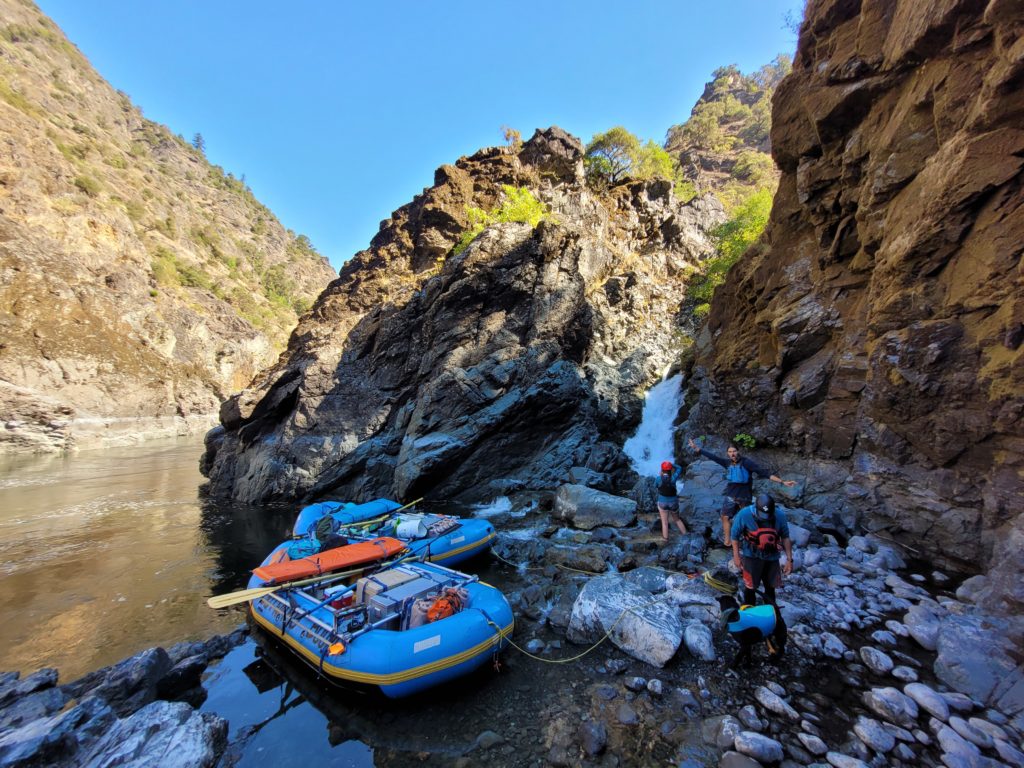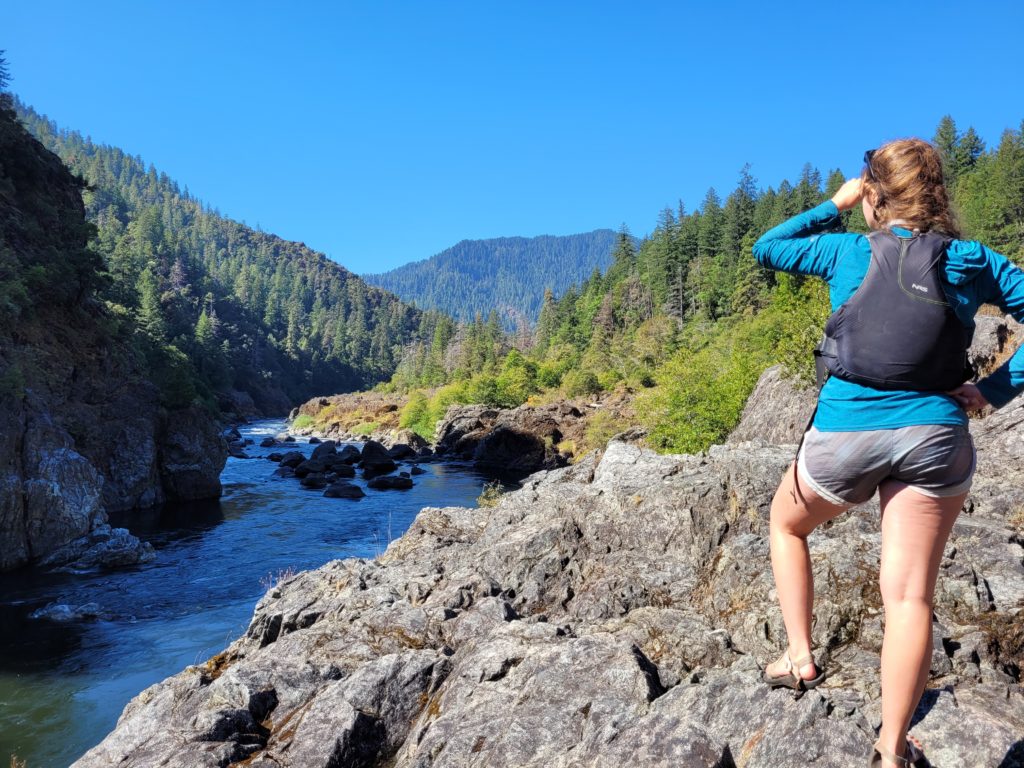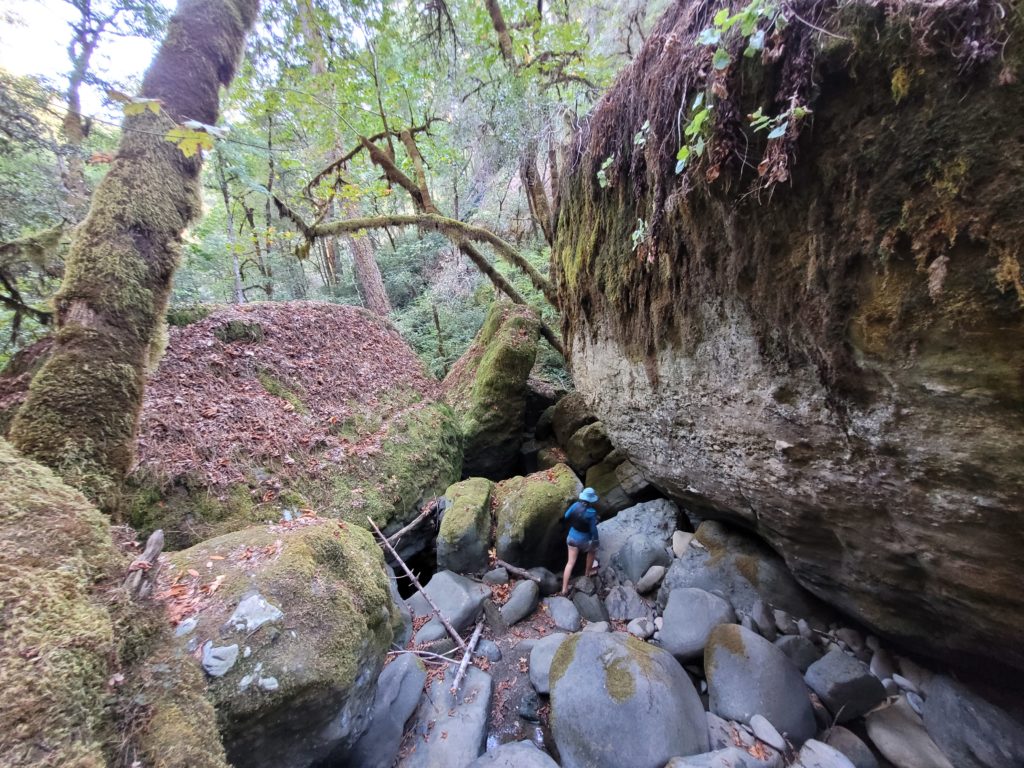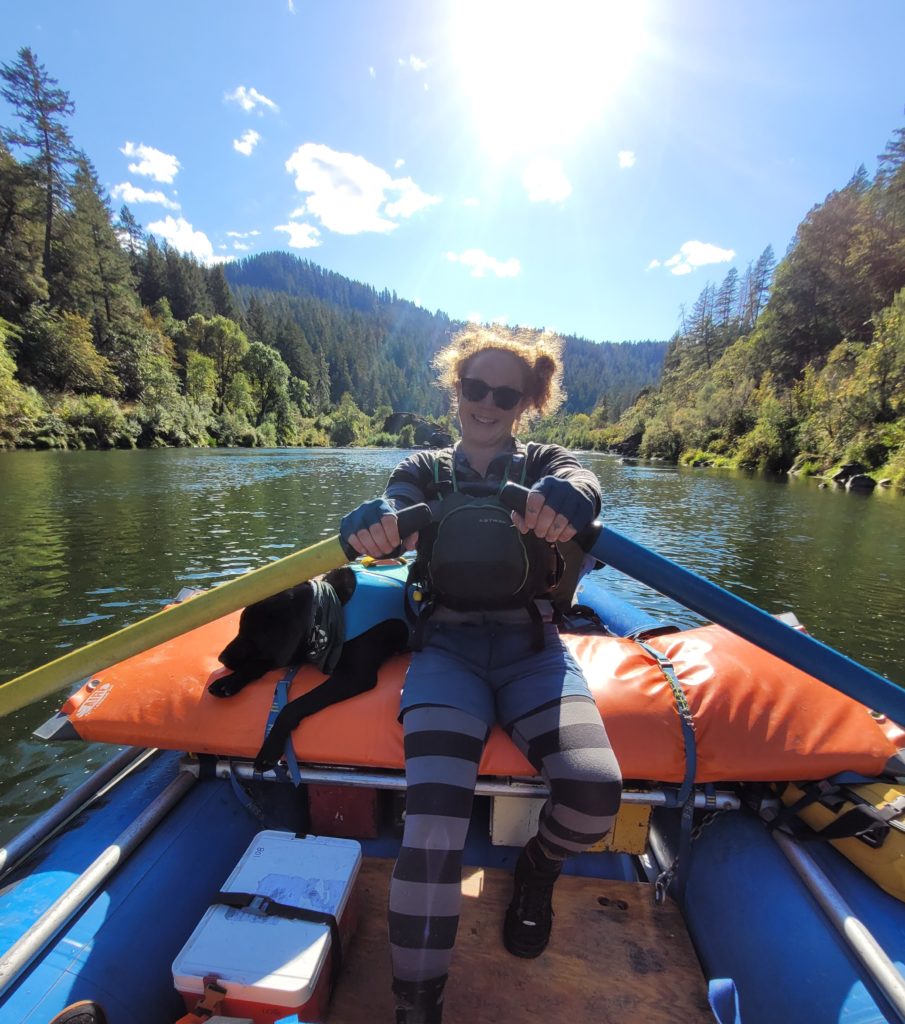 Abigail Taylor shares her experience volunteering for Adventure Scientists’ Wild and Scenic Rivers project, which provides water quality data to river managers of some of the most treasured waterways across the United States. In September 2022, she led a crew of volunteers down Oregons’ Rogue River. Here is her story:
Abigail Taylor shares her experience volunteering for Adventure Scientists’ Wild and Scenic Rivers project, which provides water quality data to river managers of some of the most treasured waterways across the United States. In September 2022, she led a crew of volunteers down Oregons’ Rogue River. Here is her story:
Water has always held a special place in my heart. I grew up with it, splashing in the muddy creeks of Northeast Georgia and basking in the silty, lukewarm water of Lake Tugaloo before I ever really knew what a dam was. Even before I tried kayaking my first big rapid (and subsequently swimming it), I admired the immense power of rivers. Dropping over Nantahala Falls, getting churned through the foam, and popping out sputtering, shivering, and grinning got me hooked.
Despite my mother’s vexation, I have spent the better part of the last decade out west and in Central Oregon. During that time, I have gotten to know the landscape. I have spent months plodding around the jagged Cascades and learning the bends and curves of the Deschutes River. Lands I’ve grown to love have been torched by drought and wildfire, and development is putting more and more straws into the ever-shrinking cup of groundwater.
Growing up, I didn’t know what a Wild and Scenic River was. Of the ~69,547 river miles in Georgia, just 49.2 of the Chattooga River have been designated as such. On the other hand, Oregon has nearly 2,000 miles on over 60 rivers that are Wild and Scenic. Over the years, I’ve had the opportunity and privilege to boat and hike around many of them and enjoy their “outstandingly remarkable” features. As someone who received a lot of help in various ways throughout my life, I’ve always held the ability to give back in high regard. Something I appreciated about my time working at Outward Bound, an outdoor education non-profit, was how the concept of service was woven into the course structure. I often took this sentiment into my own life and spent many weekends volunteering my time and arms to trail crews around Oregon. I had heard of Adventure Scientists before, and when I saw the Wild and Scenic Rivers Project, I knew I wanted to be involved. It felt like combining the type of science I always wanted to do while helping protect the rivers I’d grown to love.
Toward the end of the summer, Adventure Scientists put out a feeler for someone to boat the Rogue River and sample a number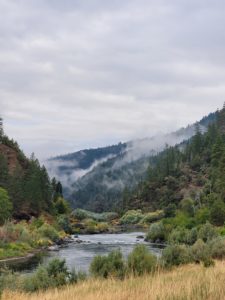 of the drainages. I jumped at the chance. Outward Bound has a long history of service projects, and I thought this would be the perfect opportunity to extend to my community there. Unfortunately, with the postseason timing of the trip, only a few weeks to prepare, and the fact that the Rum Creek Fire was busy burning over 21000 acres of forest land along the river… I ended up with a small group: myself, two fellow OB staff, and my partner (plus Stanley the dog). The initial campground I booked got refunded, and fire closures caused me to change our shuttle route and river itinerary several times. In the days leading up to the trip, I alternated between packing gear and refreshing fire maps, expecting a call at any time from a ranger to tell me that the river was closed.
of the drainages. I jumped at the chance. Outward Bound has a long history of service projects, and I thought this would be the perfect opportunity to extend to my community there. Unfortunately, with the postseason timing of the trip, only a few weeks to prepare, and the fact that the Rum Creek Fire was busy burning over 21000 acres of forest land along the river… I ended up with a small group: myself, two fellow OB staff, and my partner (plus Stanley the dog). The initial campground I booked got refunded, and fire closures caused me to change our shuttle route and river itinerary several times. In the days leading up to the trip, I alternated between packing gear and refreshing fire maps, expecting a call at any time from a ranger to tell me that the river was closed.
Then, thankfully, it rained just the right amount to help put the fire under control and not cause massive landslides. Just like that, almost all of the closures were lifted. For the forest, it would still be a long road to recovery, but the immediate danger was past. We checked in and grabbed our permit from the ranger station, drove to the Almeda boat ramp, and shoved off onto the river. My favorite part of any trip is finally starting. Being able to float away, exhale, and embrace being out on the river.
After rowing two miles, I was settling into that feeling. Ropes of mist clung to the towering trees, and the faint smell of smoke and wet wood hung in the river canyon. Glancing at the guidebook, I noted that we were coming up to “Argo Riffle.” This class two contained a large rock “known to flip unwary boaters even at lower water levels,” which I smiled about as I began to pull my oars to avoid it. Behind my boat were the two fellow OB staff who were newer to whitewater and excited to experience a new river after working on the Deschutes all summer. I waved to them, pointing out the rock, but it was too late. I stopped smiling as I watched their boat drift into the rock sideways. I began to row furiously to catch an eddy on the side. The other raft slowly wrapped itself around the huge rock.
Oars popped off the boat as the people on board crawled onto the “high side” of the boat, water poured over the raft, and theirdry bags bounced about precariously. Pinning a boat can often be frightening, but if you spend enough time on rivers, it’s an inevitable event. We were prepared with an un-pin kit and the training to know what to do. My partner and I set up a haul system with ropes to drag the raft off the rock and struggled until a fellow boater floated up. With another pair of arms pulling, we pulled the boat free. Thankfully, folks on board were unharmed, and the raft didn’t sustain any damage. We still had several major rapids to get through and creeks to sample, so we took a breath, drank some water, and continued downstream.
Occasional smoldering trees would remind us of the recent fire despite the appearance of a thick, green forest. The Rogue River is incredibly scenic, though at times it doesn’t feel very wild. Several full-service lodges are along the river, remnants of cabins and mining operations are scattered throughout, and most of the rapids have been altered via dynamite for easier passage and to allow jet boats. However, these alterations have created a much more accessible environment that allows folks to experience the Rogue River without having to ‘rough it’ or use human-powered means to access the lodges. Greater access often means increased impact, but it is necessary for folks to experience a place to want to protect it.
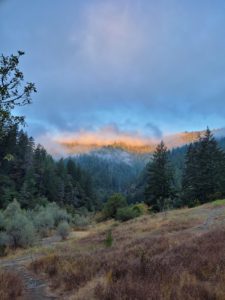
After the rocky start on our first day, we successfully bumped our way down the rest of the river section (and quite literally down the fish ladder on Rainie Falls). Over the course of five days, we paddled 38 miles and were able to sample a number of the drainages that feed into the Rogue River. Many of the creeks were previously unassessed, and a few will remain that way. Some drainages were dry, while others were so thick with bramble that we would have needed machetes and thigh-high gators to navigate the brush. Despite the ‘shwacking, accessing the side creeks was the trip’s highlight. The juxtaposition of rocky spires and thick forests created magical landscapes and scrambling up (and even under) boulders brought me back to playing explorer in the ditch behind my house as a kid. We saw flowers, deer, otters, and endless turtles and birds. We plunged into the frigid waters of Tate Creek slide and gazed with awe at the bright red newts that crawled among the pools. Once the rain cleared on the first day, we had sunny days and clear, starry nights for the remainder of the trip.
The Rogue River continues until it dumps into the Pacific; we did not. While we all agreed that we’d love to stay on the river, we had things to do back in the real world. At Foster Bar, among gold panners, we took our final water sample. We loaded our boats, ate lunch, and took a deep breath before driving white-knuckled back home via Bear Camp Road. The next day we cleaned and put away gear and submitted our samples. Then, as people often do at the end of river trips, we scattered off to the next adventure. I’m so grateful to Adventure Scientists, the Medford District USFS, and Northwest Outward Bound for helping facilitate this trip, and to my coworkers and partner for their time. I’ll see you downriver!
- Happy smiles and a hot beverage in a MiiR camp cup
- A volunteer smiles while collecting water quality measurements with a hand-held probe.
- Hand-held probes help volunteers collect water quality measurements of pH, salinity, oxygen content, and more.
- The raft rests on shore during a sunny day.
- Collecting water quality data from a tributary
- A break on shore
- Scouting the next rapid
- An adventurer scrambles up a tributary of the Rogue River, OR, dwarfed by large rocks.

